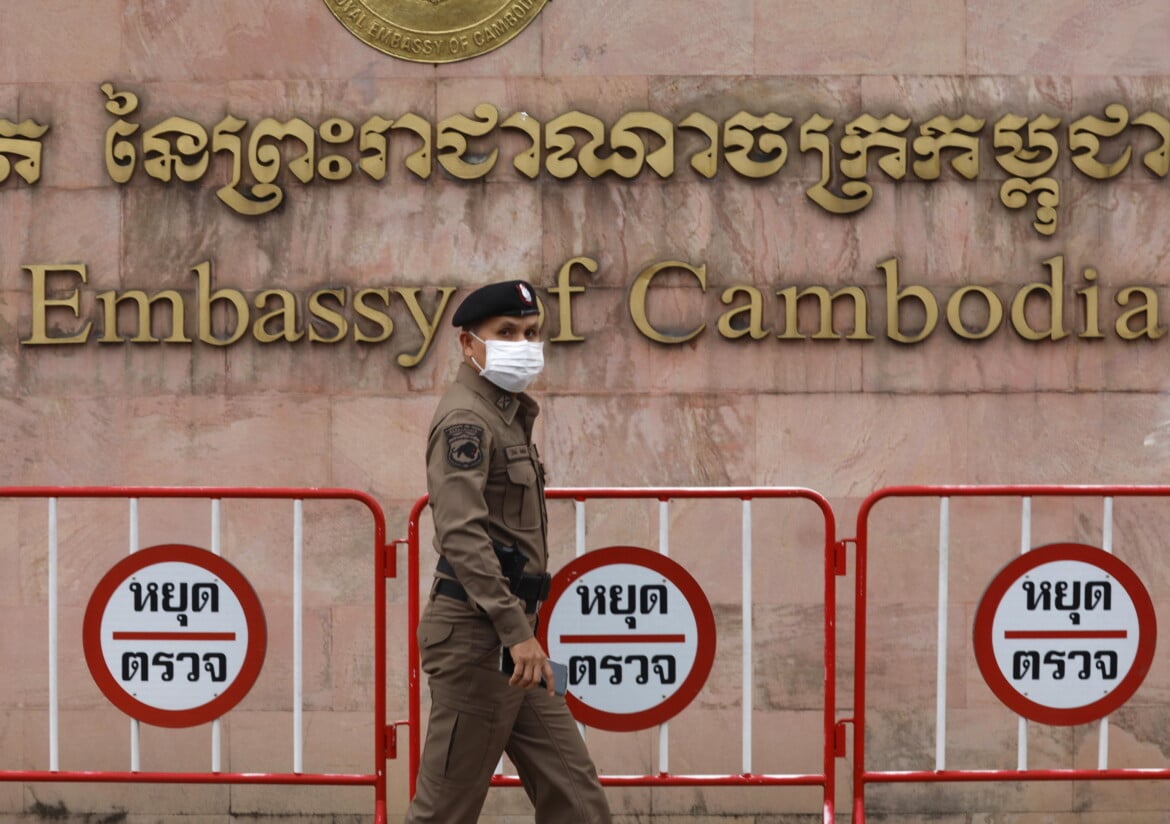Analysis
Cambodia and Thailand reignited a war that never ends
The setting is the border between the two Southeast-Asian kingdoms, locked in territorial spats over a few kilometers of land and a handful of sacred ruins since 2008.

Fighting has broken out in six sectors along the frontier, ambassadors have been recalled, residents evacuated and the border sealed, yet the most dramatic development since Thursday morning was the exchange of heavy weapons fire: F-16s from Thailand, rocket launchers from Cambodia. More than a dozen civilians have been killed and 30 wounded on Thai soil, prompting Bangkok to move 40,000 people away from the border. The death toll in Cambodia is still unknown.
Exactly how the latest clash began is unclear: accusations are flying both ways, following the wounding of several Thai soldiers who stepped on land mines – two of whom lost a leg – that Phnom Penh insists date from past wars. Who shot first on Thursday at Prasat Ta Muen Thom matters little: the Thais are flexing their muscles and so are the Cambodians, though the latter are militarily weaker.
The setting for what risks becoming a “war of stones” (due to unfolding around ancient archaeological sites) is the border between the two Southeast-Asian kingdoms, locked in territorial spats over a few kilometers of land and a handful of sacred ruins since 2008.
Then, on May 28, at Chong Bok, where the borders of Thailand, Cambodia and Laos meet, yet another incident broke out: accusations traded back and forth, one Cambodian soldier killed, civilians evacuated, rhetoric flaring in both capitals and a crisis left unresolved. That episode also cost Paetongtarn Shinawatra her premiership: the Thai leader, in a call with former Cambodian premier Hun Sen – whom she called “uncle” – had criticized General Boonsin Padklang, commander of the Second Military Region that covers the north-eastern provinces, including the contested zones of Ubon Ratchathani (where May’s incident took place), Sisaket, Buri Ram and Surin.
On Wednesday, Boonsin ordered four border checkpoints closed, and it is striking that it was the general – while interim premier Phumtham Wechayacha merely spoke of a “delicate situation” (and the suspended premier condemned the events only 12 hours later) – who asserted Thailand’s right to self-defense, a declaration that should normally come from political leaders. It is clear that the standoff benefits the armed forces, something that is raising justified worries in a country whose history is dotted with military takeovers.
Plenty of voices are pouring fuel on the fire: veteran Cambodian politician-general Hun Sen, now Senate speaker, said the Thais were conducting an “invasion,” while his son Manet demanded an urgent UN Security Council meeting over the “unprovoked and premeditated military aggression.”
Thaksin Shinawatra, father of the ousted Thai premier, accused Hun Sen of ordering the first strikes and claimed Thailand has legitimate grounds to retaliate. In another curious turn, Hun Sen and Thaksin were once close friends but are now trading barbs. What is certain is that nationalist fervor, standard fare when states clash, is filling the void left by two embattled governments: Bangkok’s mired in a cabinet crisis, and Phnom Penh’s dictatorial regime run by the unpopular Hun dynasty, where dissent is banned, leading to prison sentences, shuttered newspapers and disappeared opponents of the regime.
Before the May incident, the first disputes surfaced in 2008, then in 2009 and again in 2011 when, in the area around Preah Vihear – a Khmer temple that served as a Khmer Rouge stronghold before their defeat – tanks ringed the ruins and the two armies traded shells. Since 1962, the International Court of Justice at The Hague has twice been asked to rule on the dispute; its latest judgement, in 2013, reaffirmed that the ground around and beneath the temple belongs to Cambodia. Thailand, however, does not recognize the Court’s jurisdiction. According to UNESCO – which in July 2008 added Preah Vihear to the World Heritage List, enraging Bangkok – both militaries damaged parts of the shrine with their shells. Those wounds etched in the stones, old and new, there and elsewhere, stand as reminders that the larger wound is still open.
That wound ultimately dates back to maps drawn by French cartographers in the early 20th century, passed on as historical heritage on July 12, 1954, when the Indochina War formally ended and France’s protectorate over Cambodia – established by an 1863 treaty between King Norodom and Paris – was dissolved. That pact had quelled fears of Thai and Vietnamese expansion, granting the Kingdom of Cambodia formal sovereignty and military protection along with control of its own foreign affairs, customs and borders – which Bangkok later redrew on its own. The joint commissions meant to solve the dispute have long since disbanded. The stones remain as markers for the ongoing conflict.
Originally published at https://ilmanifesto.it/cambogia-thailandia-riparte-una-guerra-che-non-finisce-mai on 2025-07-25
